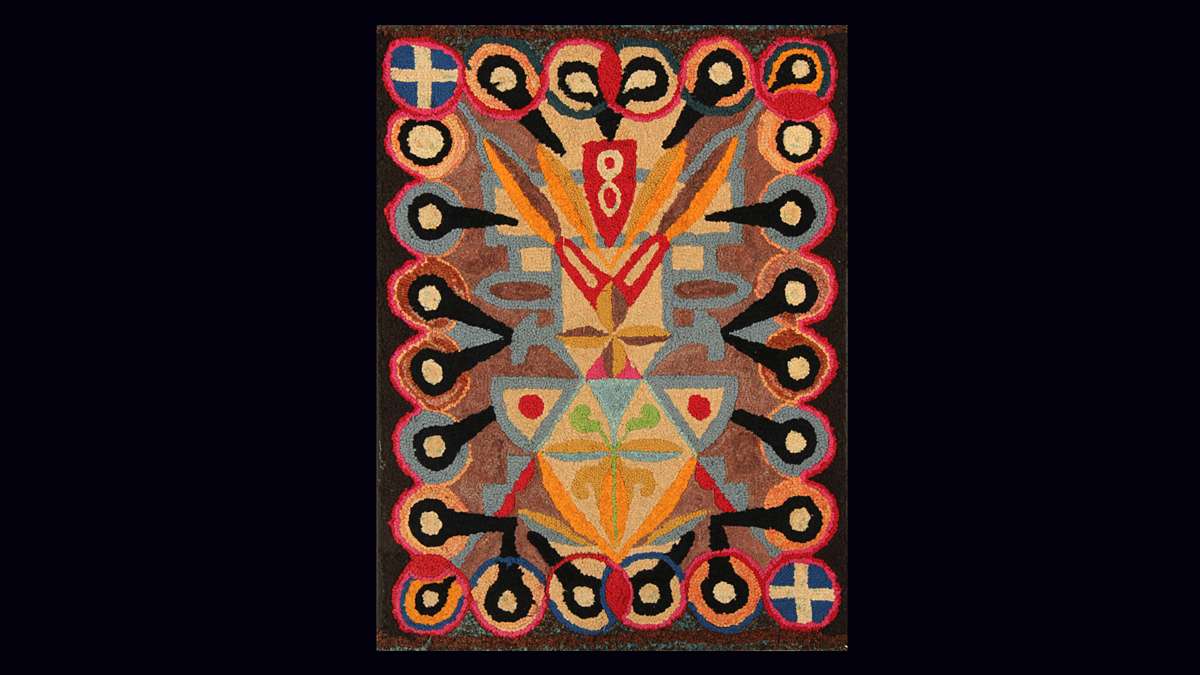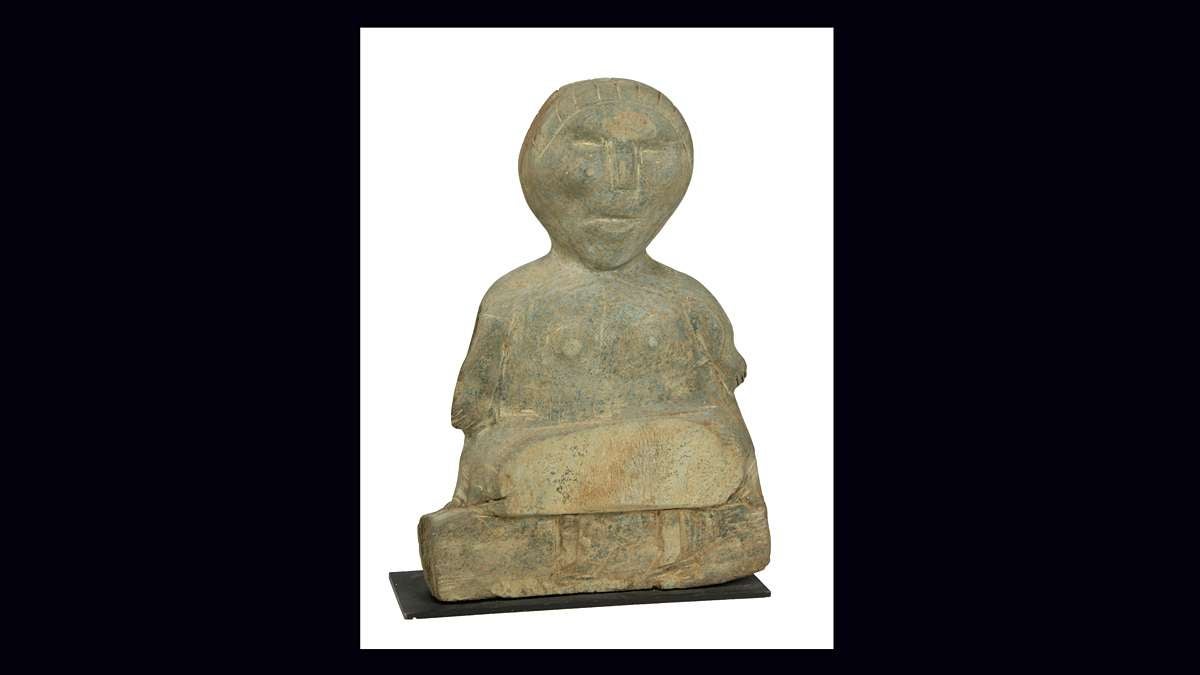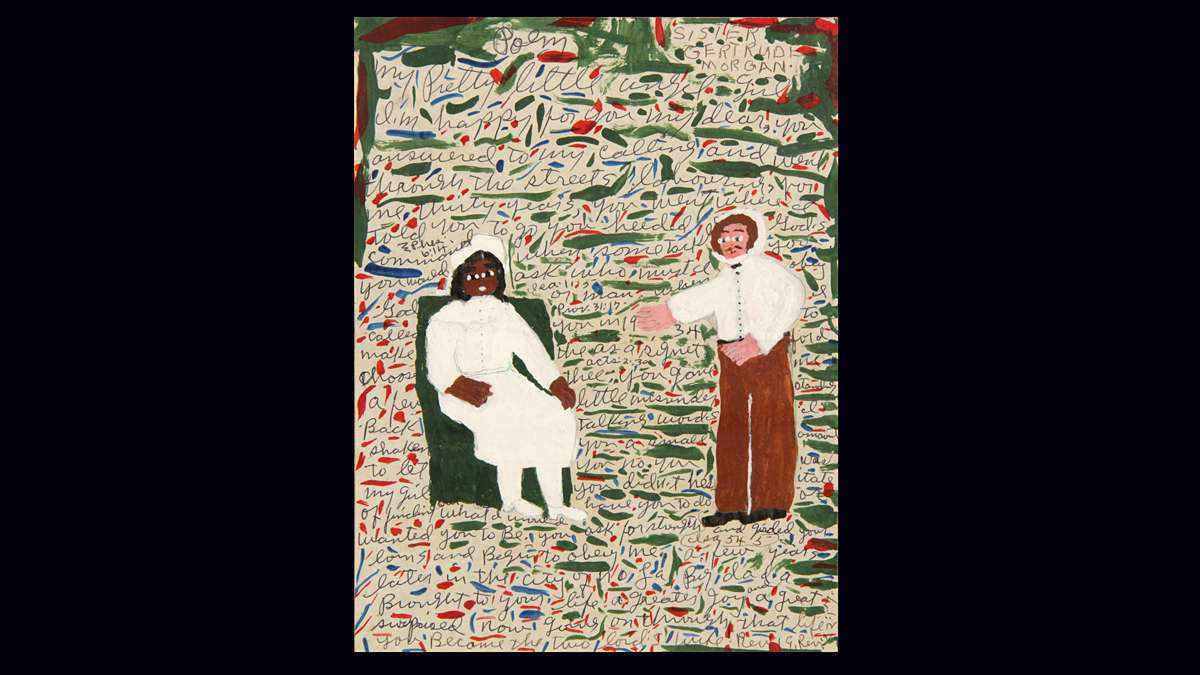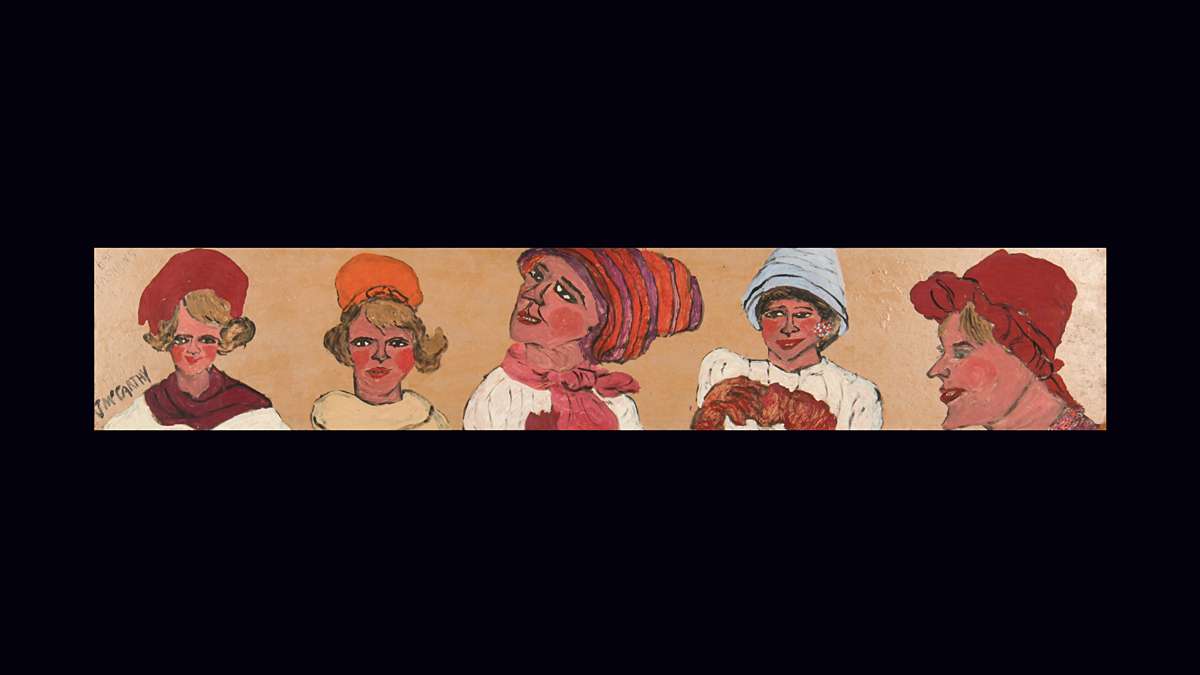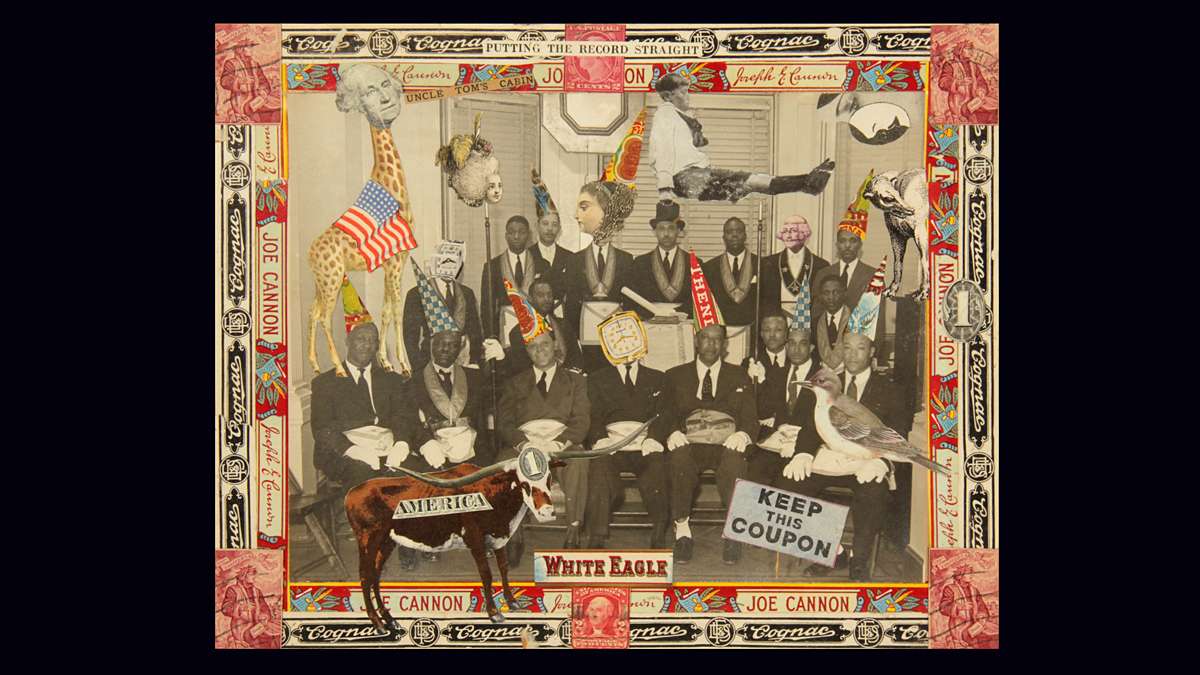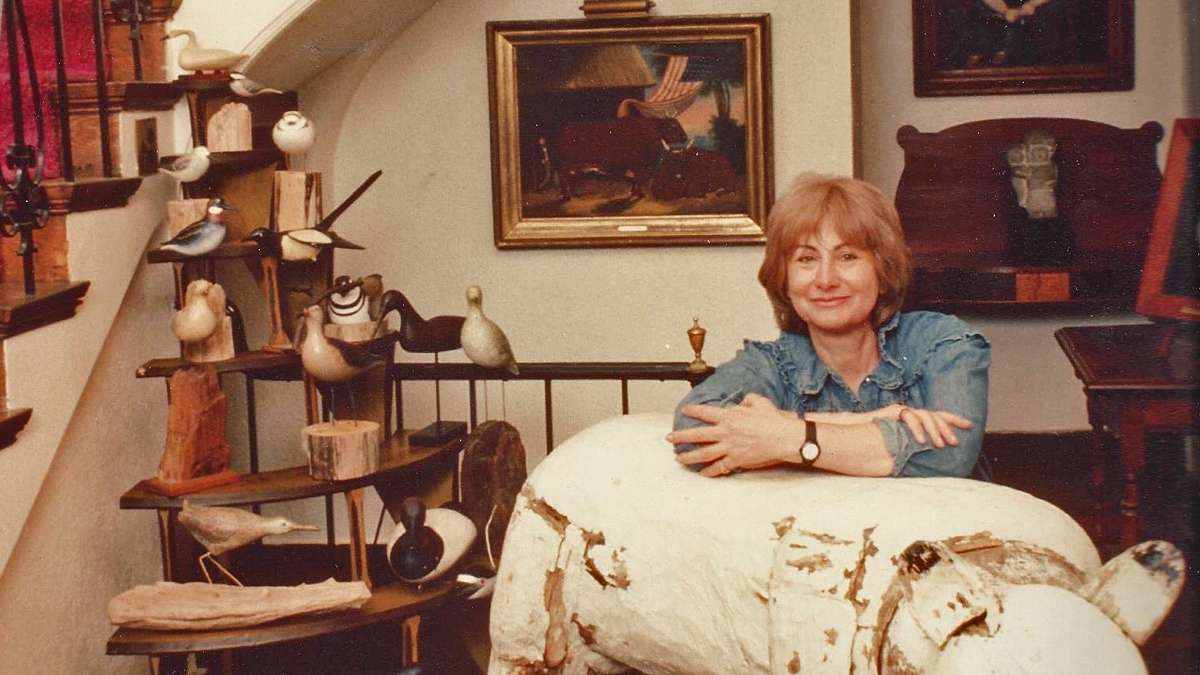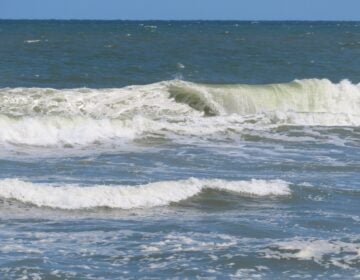Major folk art collection to be auctioned in Philadelphia
The African tortoise is a Princeton legend.
Known as George, the 200-year-old reptile — said to have been a part of Queen Victoria’s court — has amused visitors since the 1960s.
Kookie Johnson grew up in Princeton with George as her pet. George ambles out of hiding, moving at the speed of, well, a tortoise.
Kookie’s mother, Barbara “Kristina” Johnson – who died almost a year ago — looks at us from a circa 1960 photo, disembarking from the Queen Mary in New York Harbor. George is on a leash, and Kristina appears even more elegant than Jackie, wearing a mink hat and with a fur piece slung over one arm, white gloves in hand.
Kristina, who was the first wife of sculptor and pharmaceutical heir J. Seward Johnson Jr., made a name for herself as an expert on scrimshaw and American folk art, to be auctioned in May at Material Culture in Philadelphia. It will include folk art, Outsider art, decoys, hooked rugs and ephemera.
It’s tough for Kookie to part with some of these. “I didn’t want to keep it all so I couldn’t keep the best.” She’s had to part with works by Sister Gertrude and Bill Traylor.
“Kristina believed her art had soul — she didn’t collect as much as adopt her finds,” says Kookie. “She nurtured her pieces, providing unconditional love. The pieces in her collection are ready to mature, move on and pursue lives of their own.” Kookie hopes some of the art will go to public venues or museums where viewers can learn about the culture from which these items emerged. “These self-taught men and women… represent what makes us human – the freedom to create, to surround ourselves by and enrich our lives with art.”
Kristina thought of herself more as an art collaborator than collector. “For me, collecting is an adventure that opens up new worlds,” she told Art & Antiques in 1996. “Every work of art has its own soul and feeling, and that’s what I want to absorb.”
Before her death, Kristina experienced a gradual decline over three years, first breaking one hip and then the other – ironically, she tripped over one of her prized hooked rugs. Her rug collection numbered over 400, many in use on the floor. “She would never compromise for her age, not in how she dressed or in going to parties – she never gave into being older,” says Kookie. It was an infection of the second hip that killed her.
As Kookie goes through her mother’s papers, she is beginning to put together the pieces of her mother’s very private life. Born in Berlin, Barbara Kristina Eisenfuhr’s father was a banker and her mother was a socialite from Russia – the two met at a dance. After the bombing, Kristina’s family was separated and she was raised by her grandparents in Switzerland, Italy and in Schleswig-Holstein, where the family had a country house.
She came to the U.S. as a teenager, without papers, and because of her ability to speak many languages and her eye for art, was able to find work as an advertising agent representing foreign illustrators. “She was artist, model and muse for photographers such as Naomi Savage,” recounts Kookie.
When she married J. Seward Johnson, she started to amass her whaling collection, said to have been the largest private whaling collection in the world. “I grew up traveling for whale watching and sea captains,” recounts Kookie. Kristina became a leading historian in the field, founding the Whale Research Foundation in Princeton. She also served on the boards of the South Street Seaport Museum and the National Maritime Society.
When Kookie was 14, her mother went back to school to get a law degree. Kristina’s family had been lawyers, and she wanted to pursue intellectual property law, where she could combine her love for art with law.
Perhaps because she was an immigrant, Kristina loved American art. This led to her interest in American maritime art, and also art featuring George Washington. Hooked rugs, Kristina once said, “convey the spirit of this country, as do songs and folk paintings. They are at once artistic and simple, emotive and functional.”
Kristina served on the board of trustees of the American Folk Art Museum from 1968 through 2010, and served as board president in the 1970s, organizing an exhibition “Hunt for the Whale.” To the Folk Art Museum she donated a sizable number of artworks including significant examples of scrimshaw. While at the museum she curated exhibitions, inaugurated a lecture series, created a scholarship fund and helped establish The Clarion, one of the most respected folk art journals.
Her house in Princeton was a museum of sorts, where Kristina’s collection could be suitably displayed. Designed by Ernest Flagg, who also designed the Singer Building on Broadway – New York’s tallest building from 1907 to 1907 – it is reminiscent of a French country house, with fieldstone walls encircling the property.
The three-story foyer, with Spanish tile flooring and a wrought iron balustrade, was lined with portrait paintings and other folk art, including a 16-by-12 foot painting on a barn door.
The house and collections were a fantasy land for children and their visitors, with a trunk full of kimonos, a room full of swans (“The Swan Room”). Kookie moved from room to room while growing up and one of her bedrooms is now the “Fish Room” where biplanes, Zepelins and other antique toys are suspended. The house will go on the market in spring.
And oh, the parties! First there had been cocktail/dinner parties in the 1960s and 1970s. Kristina, a teetotaler, held many teas. “She had this enormous tiffany coffee/tea set that will sell at Material Culture,” says Kookie. Most of the parties were associated with house and collection tours to school groups and for friends of the Folk Art Museum and historical societies.
“She lived large,” Kookie wrote. “Her energy – so powerful she could silence a room upon entering – is inextinguishable.”
The Kristina Barbara Johnson EstateAuction: Sunday, May 4, 2014, 10 a.m.Exhibition: May 1 – 3, 10 a.m. – 6 p.m.Material Culture, 4700 Wissahickon Avenue, Philadelphia. 215-438-4700 www.materialculture.com
______________________________________________
The Artful Blogger is written by Ilene Dube and offers a look inside the art world of the greater Princeton area. Ilene Dube is an award-winning arts writer and editor, as well as an artist, curator and activist for the arts.
WHYY is your source for fact-based, in-depth journalism and information. As a nonprofit organization, we rely on financial support from readers like you. Please give today.


